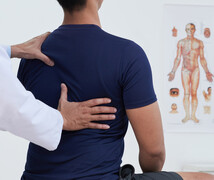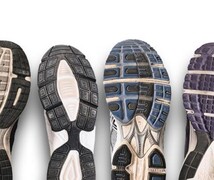Duke Health is one of a few centers in North Carolina to offer a more accurate way to diagnose foot, ankle, knee, and hip problems with less radiation than traditional CT scans. Standing CT scans are taken while you are bearing weight and produce detailed 3D images that show how an injury affects alignment and functionality. This can help doctors decide whether surgery is needed, said Cesar de Cesar Netto, MD, a foot and ankle orthopaedic surgeon at Duke Health. “For example, with a condition called progressive collapsing flatfoot deformity, doctors can determine how far the deformity has progressed and if surgery or some other treatment is needed, and when,” he said.
Traditional Imaging for Foot and Ankle Injuries
Until recently, doctors had two choices for diagnosing foot, ankle, and other lower extremity injuries -- X-rays or CT scans. X-rays create images of bones under weight-bearing conditions. But these 2D, or flat, images don’t allow complete assessment of the foot and ankle. CT scans generate 3D images, but they are performed while you are lying down, so factors like skeletal alignment cannot not be properly assessed.
Standing CT Scans Take Less Time
Unlike many other centers, Duke Orthopaedics Arringdon offers two types of standing CT scans. One looks at the ankles and feet. A second, newer scanner creates images of the entire leg from the hip down. During a standing CT scan, you stand on a platform equipped with support handles while the scanner rotates around your lower extremities. A scan of the foot and ankle takes under 30 seconds. A scan from the hips down lasts about two minutes. Conventional X-rays and a traditional CT scan can take up to 30 minutes.
Reduced Radiation and Better Results
Standing CT scanners use a different type of radiation than traditional CT scans, explained Dr. de Cesar Netto. Cone beam radiation is a concentrated, low-power X-ray beam instead of a fan-shaped, high-output X-ray beam. This results in a much lower radiation dosage. “A weightbearing CT of the foot and ankle is the same radiation as five conventional X-rays,” he said. Since both legs are scanned at the same time, a second set of tests is not required if a doctor wants to compare the injured side with the uninjured one. If you can’t stand for the scan because of pain or other issues, you can be seated. The images won’t provide weight-bearing information, but your doctor will still get a detailed 3D scan with lower radiation.
More Accurate Diagnosis, More Personalized Treatment
The Future of Standing CT
According to Dr. de Cesar Netto, standing CT scans for foot and ankle problems is just the beginning. “Offering this technology for foot and ankle was revolutionary. Now it's happening for the knee and the hip.” He and his colleagues are currently researching how standing CT can be used for other parts of the body. “Having a complete 3D assessment of standing weight-bearing alignment and connecting a spine issue to a foot, ankle, or hip issue will make orthopaedic care more connected,” he said. “It will allow us to take care of the entire patient.”





